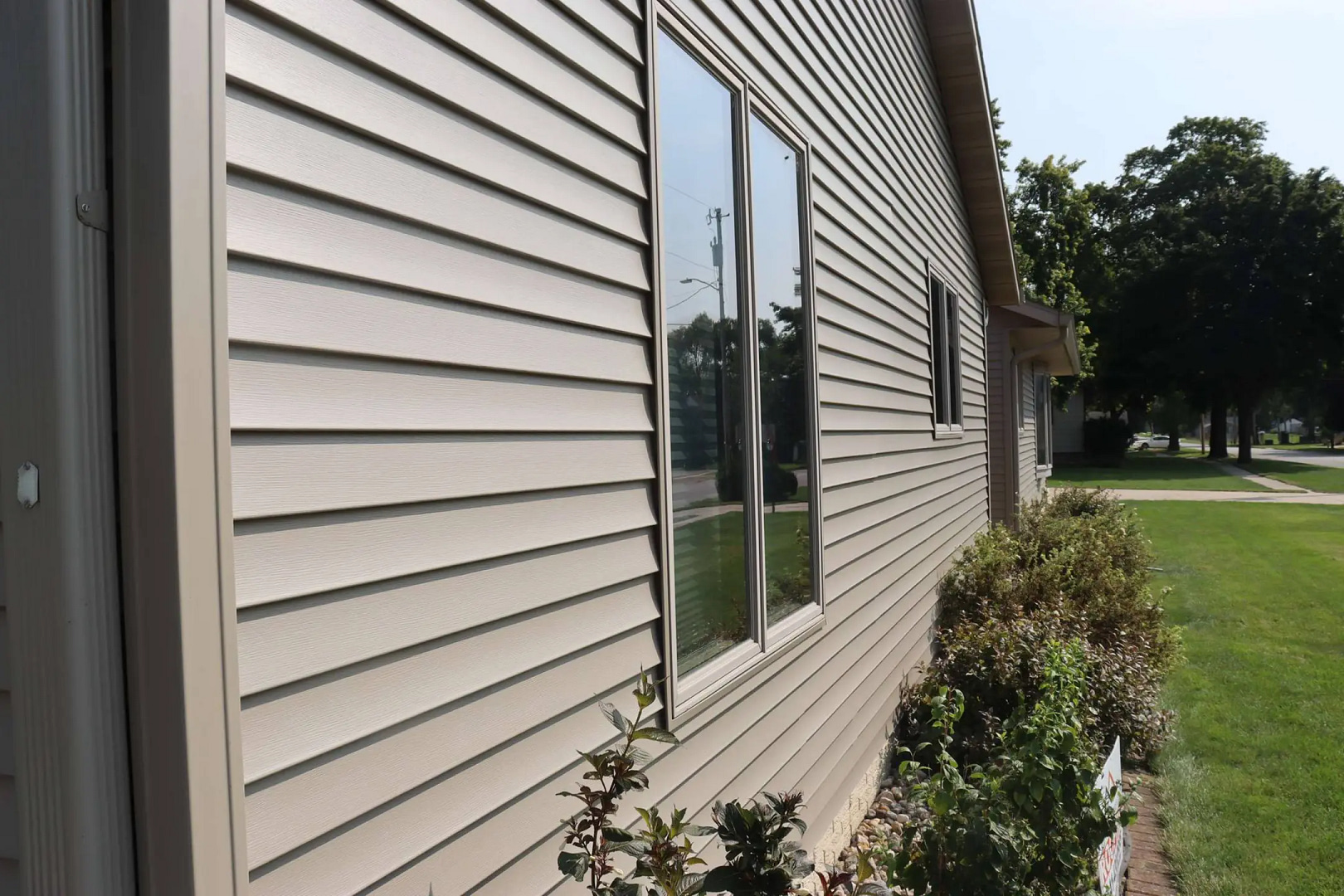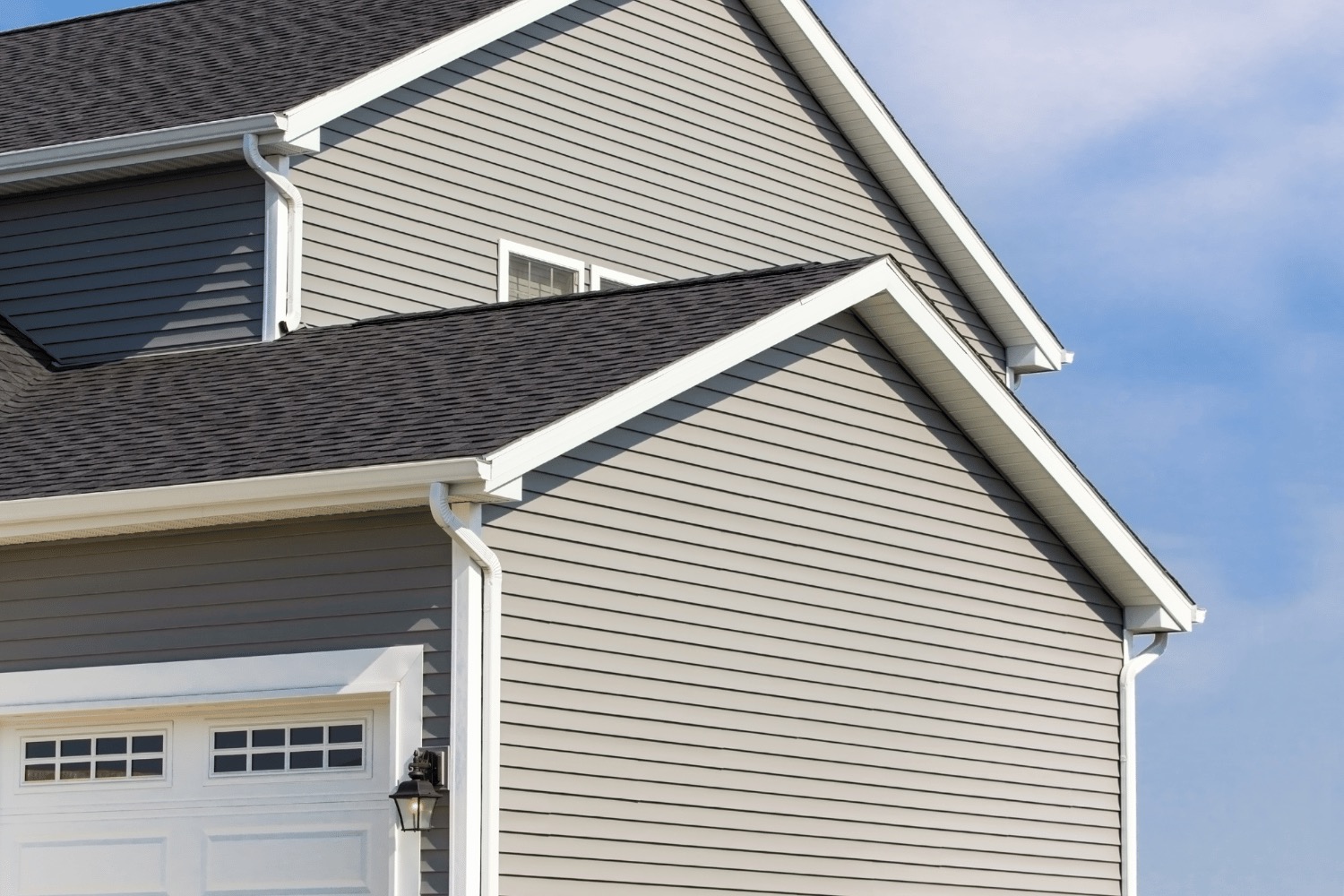Morris Siding Contractor with Years of Expertise in Home Exterior Upgrades
Morris Siding Contractor with Years of Expertise in Home Exterior Upgrades
Blog Article
The Necessary Guide to the Different Kinds of Home Siding and Their Unique Benefits
In the world of home improvement, choosing the right house siding is a vital decision that affects both aesthetic charm and functional efficiency. The range of materials readily available, such as timber, vinyl, fiber cement, block, and metal, each offer one-of-a-kind benefits that deal with different needs and choices. Recognizing these distinctions can considerably enhance the longevity and value of a home - morris siding contractor. Nonetheless, with so numerous choices to consider, which siding product really attracts attention for your certain task? Checking out these selections can bring about educated decisions that line up with both design and usefulness.
Wood Siding
Timber home siding, a popular selection for domestic exteriors, supplies an ageless aesthetic that integrates natural charm with architectural integrity. This home siding product is readily available in various styles, consisting of clapboard, roof shingles, and board-and-batten, allowing house owners to personalize their façade to match their layout choices. Wood siding is generally crafted from durable varieties such as cedar, redwood, or want, which are recognized for their strength and capability to hold up against ecological stress factors.
One of the main advantages of wood house siding is its superb insulation properties, which can add to power performance and lower heating expenses. In addition, wood siding is eco-friendly, making it an eco-friendly choice when sourced sustainably. Normal upkeep, including painting or staining, can extend its life-span and enhance its look, permitting home owners to preserve the all-natural beauty of the wood.
Nevertheless, prospective drawbacks consist of vulnerability to parasites, rot, and weather damages, requiring ample treatment and maintenance - morris siding contractor. Despite these worries, when properly taken care of, wood home siding can provide a resilient and lovely remedy that enhances the character of a home while supplying a cozy, welcoming atmosphere

Vinyl Siding
Plastic exterior siding has actually become a leading option for property owners looking for a low-maintenance exterior alternative that integrates toughness and affordability. This functional material is crafted from polyvinyl chloride (PVC), making it immune to different weather problems, including moisture and UV rays. As a result, plastic house siding does not warp, rot, or fade, ensuring resilient aesthetic appeal.
Among the main benefits of vinyl house siding is its substantial variety of shades and styles, enabling home owners to accomplish the preferred search for their residential property without the requirement for frequent repainting. Additionally, plastic house siding is simple to install, which can considerably decrease labor prices during building and construction or restoration projects.
Plastic exterior siding also adds to power effectiveness. Several choices attribute insulation backing, which improves thermal performance, helping to maintain comfy indoor temperature levels and potentially decreasing energy bills. In addition, its smooth surface area helps with easy cleansing, calling for only regular cleaning with a yard tube to get rid of dust and particles.
Fiber Concrete Siding
Fiber concrete house siding has actually obtained grip amongst homeowners and builders alike due to its remarkable mix of longevity and visual convenience. Made up of a mix of cellulose, cement, and sand fibers, this home siding choice is engineered to withstand severe climate condition, including high winds, hefty rainfall, and temperature fluctuations, making it a durable choice for residential outsides.

One of the key benefits of fiber concrete siding is its resistance to bugs, such as termites, and its non-combustible nature, offering enhanced fire safety and security. morris siding contractor. Additionally, it is readily available in a broad array of textures, shades, and styles, permitting house owners to accomplish their wanted aesthetic without giving up performance
An additional advantage is its low upkeep needs; fiber concrete exterior siding commonly needs painting or staining every 5-10 years, which is much less frequent than various other materials. Additionally, its longevity contributes to a lower total expense of possession, as it minimizes the need for constant repairs or replacements.
Eventually, fiber cement home siding stands for an excellent investment for those seeking a resilient, appealing, and functional outside alternative, combining both type and feature to boost the home's curb allure.
Steel Home Siding
The appeal of metal exterior siding depends on its durable durability and modern aesthetic charm, making it a popular selection for modern design. Available in materials such as light weight aluminum and steel, steel home siding uses a variety of surfaces and colors, enabling house owners to accomplish an individualized look that complements their design Get More Info vision.

Energy performance is an additional significant benefit, as many metal siding items are created with insulation choices that aid control indoor temperatures. This can result in decreased energy costs over time. Additionally, steel siding is commonly recyclable, making it an ecologically pleasant selection for sustainability-minded home owners.
The setup process for steel home siding can be reasonably straightforward, resulting in a quicker turn-around time for building tasks. In general, steel house siding integrates functionality and style, making it a functional choice for those seeking a long-lasting and visually appealing outside surface.
Brick and Rock Exterior Siding
Brick and rock exterior siding stands apart as a classic option that enhances the visual charm of any kind of home. Understood for their sturdiness and low upkeep, these materials provide an extraordinary return on investment while boosting the home's curb charm. Available in numerous shades, appearances, and patterns, block and stone can be tailored to match varied building styles, from traditional to modern.
Among the main advantages of block and rock house siding over here is their energy performance. Both materials have natural protecting residential properties that aid control indoor temperatures, possibly reducing cooling and heating prices. Furthermore, they supply remarkable fire resistance contrasted to other home siding choices, adding to improved security.
Another benefit is their long life. Brick and stone can last for decades, often needing minimal upkeep past occasional cleaning. Unlike timber exterior siding, they are unsusceptible bugs and rot, ensuring a long-lasting outside that stands up to the elements.
Final Thought
In summary, the option of exterior siding significantly influences a home's aesthetic allure, energy performance, and maintenance needs. Each type of house siding-- whether wood, plastic, fiber metal, block, or cement and stone-- supplies one-of-a-kind benefits customized to various home owner choices and environmental problems.
One of the primary advantages of wood siding is its superb weblink insulation homes, which can add to power effectiveness and lower home heating prices. In addition, wood house siding is naturally degradable, making it an eco friendly alternative when sourced sustainably.One of the primary advantages of metal exterior siding is its resistance to various ecological factors.Power effectiveness is another considerable advantage, as several steel house siding products are made with insulation choices that help control interior temperatures. Each type of siding-- whether timber, plastic, fiber cement, metal, or brick and stone-- provides unique benefits customized to various home owner preferences and ecological conditions.
Report this page